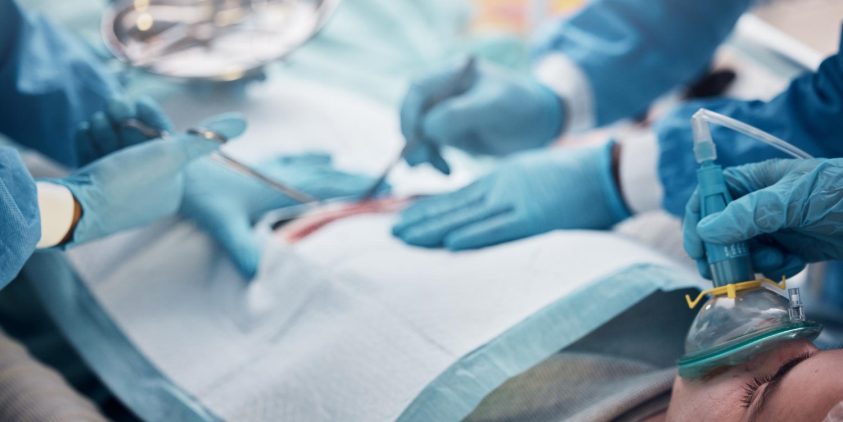Peeling Back the Layers: Exploring the Enigmatic Human Appendix
This article was written in collaboration with Christine T. and ChatGPT, our little helper developed by OpenAI.

An Introduction to the Appendix
Often undervalued, the human appendix is much more than an ancillary organ in our intricate framework. Nestled in the lower right sector of our abdomen, this diminutive pouch-like structure holds a key role in our overall health. While its precise function remains somewhat elusive to science, it’s well-established that the appendix plays a significant role in our immunological defenses and gastrointestinal health. Modern medical findings are helping to shed light on this long-misunderstood organ, with potential implications for our broader understanding of the human microbiome.
The Anatomy of the Appendix
Positioned at the crossroads of the small and large intestines, the appendix is an integral component of our digestive framework. Resembling a tube-shaped pocket, it measures an average of 9 cm in length in adults. However, its size can vary significantly, ranging from 2 to 20 cm. It’s part of the gut-associated lymphoid tissues (GALT), a component of the immune system critical for generating an immune response. The appendix is classified as secondary lymphoid tissue, much like your lymph nodes, and it’s rich in immune cells, specifically lymphocytes.
Decoding the Function of the Appendix
Long thought to be a redundant organ, contemporary medical insights suggests that the appendix boasts a dual function: an immunological asset and a sanctuary for gut flora.
Immunological Role: The appendix’s lymphoid tissue composition and strategic location where the small and large intestines meet to enable it to function as a frontline guard, capable of sparking a robust immune response against incoming pathogens.
Gut Flora Sanctuary: Emerging research points to the appendix as a potential refuge and breeding ground for beneficial gut bacteria. After bouts of illness such as diarrhea or the use of antibiotics, when the population of gut bacteria significantly depletes, the appendix can repopulate the gut with these crucial bacteria.
Disorders Impacting the Appendix
Despite its relative obscurity, the appendix is not exempt from disease. Two prevalent afflictions are appendicitis and carcinoid tumors.
Appendicitis: This inflammatory ailment is the most common reason for urgent abdominal surgery, affecting about 7% of the population. Frequently triggered by an obstruction that leads to bacterial infection, the condition can become severe if not promptly treated, with the risk of rupture leading to peritonitis.
Carcinoid Tumors: These are the most common type of appendix tumors, usually found incidentally during appendectomy procedures. While rare and often asymptomatic, they can sometimes lead to symptoms such as abdominal pain, bloating, or changes in bowel habits. They may necessitate surgical removal upon detection.
Nursing Perspectives on Appendix-Related Conditions
Nurses play an instrumental role in managing appendix-related conditions from the onset of symptoms to post-operative care. Nurses are often the first to evaluate patients and observe symptoms such as abdominal pain, which might indicate appendicitis. They play a crucial role in educating patients about surgical procedures, potential risks, and the importance of timely treatment. Post-operatively, nurses monitor patients for any signs of complications, manage pain, and provide education on wound care, diet, activity level, and follow-up care.
Recent Discoveries About the Appendix
The medical research landscape is perpetually evolving, reshaping our understanding of the appendix. Recent studies have suggested a possible link between the appendix and Parkinson’s disease, highlighting that the organ might play a role in the early stages of this neurodegenerative condition. Other research focuses on the appendix’s microbiome and its impact on overall gut health, potentially altering how we approach treatments for various gastrointestinal diseases. This underscores the demand for continued exploration into this often-overlooked organ.
Wrapping Up
The human appendix is far from a passive participant in our physiological functions. It’s a small organ with a significant role, and as cutting-edge research unveils more about its latent potential and functionality, nurses stand at the vanguard. Nurses utilize their in-depth understanding of this organ and its associated conditions to deliver indispensable care for patients wrestling with appendix-related challenges.
In conclusion, every organ, no matter how small, plays a part in the remarkable, finely-tuned orchestra of the human body. It’s a testament to the complexity and brilliance of our physiology and an ongoing reminder of the importance of continued research, learning, and education in the medical and nursing fields.
